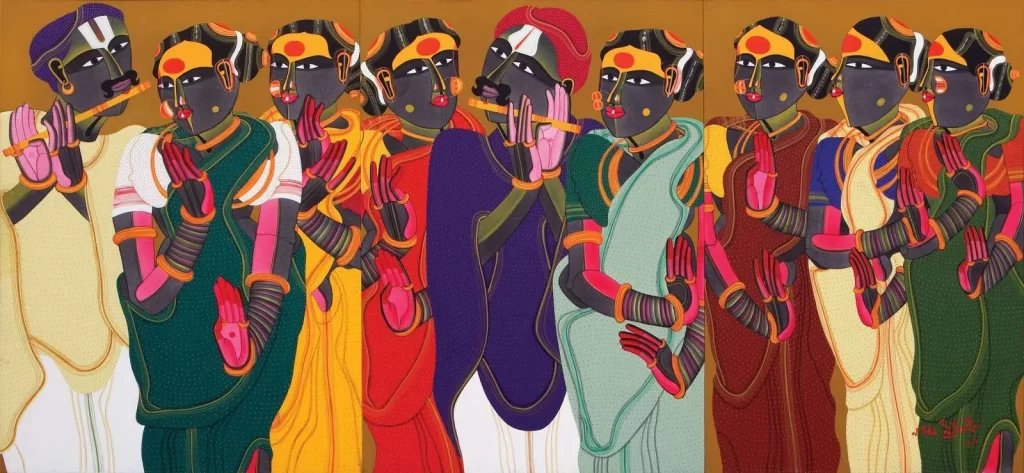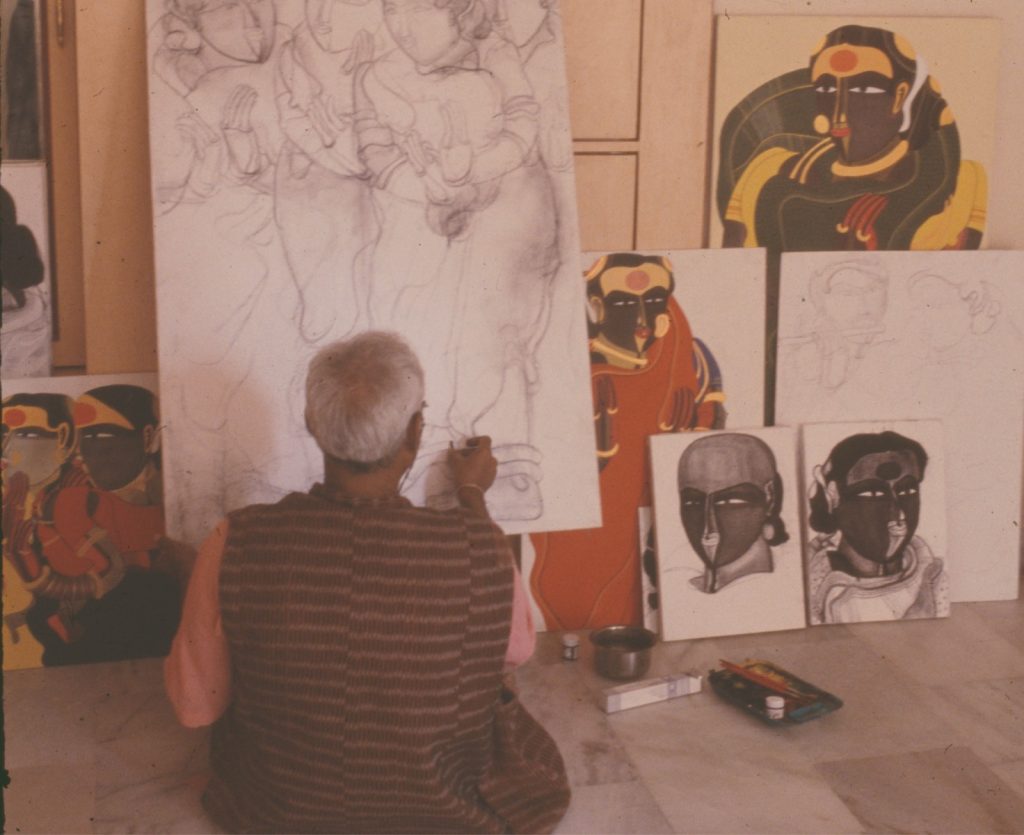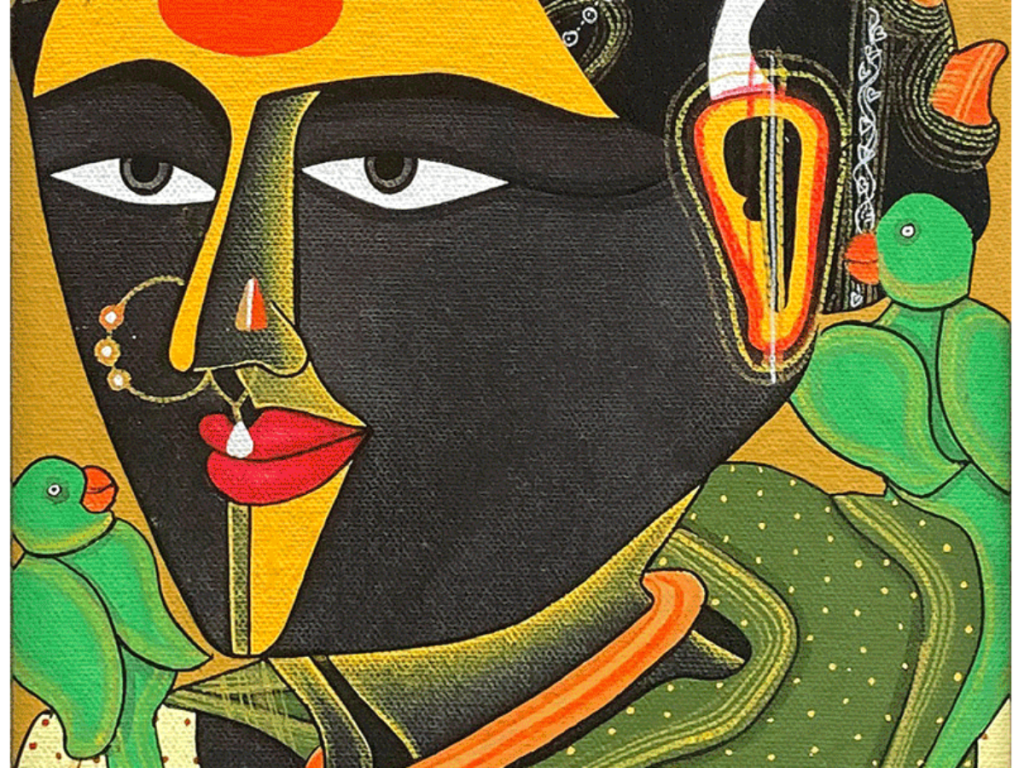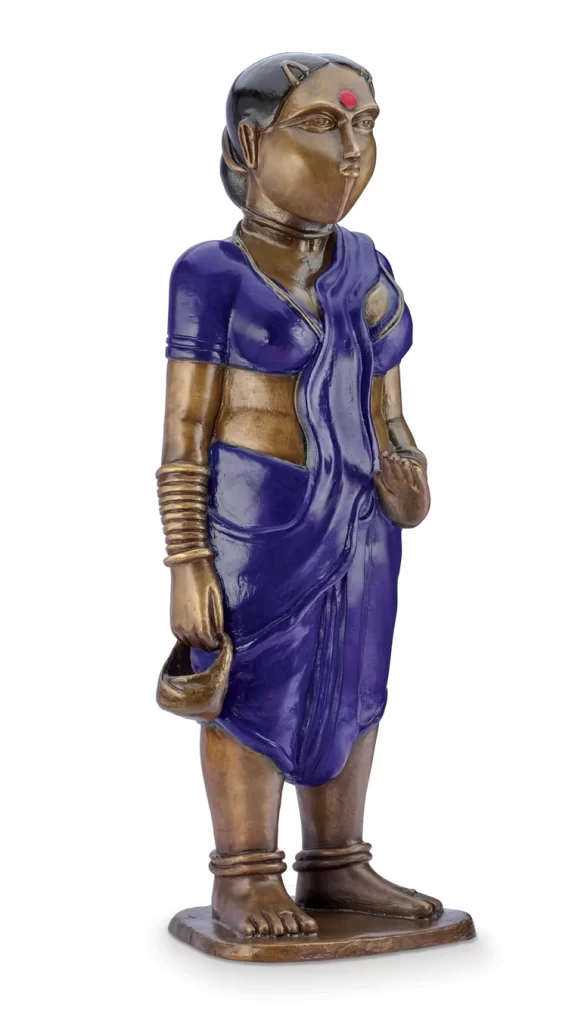Thota Vaikuntam is a man who wears many hats. He is a legend, an artist, and an art director. He was born in 1942 in Burugupalli, Karimnagar, Telangana. His father had a grocery shop and was strongly against him pursuing art. With the support of his brother and mother, he finally came around to take art as a serious vocation. Artist Thota Vaikuntam got a diploma in Painting at the College of Fine Arts and Architecture, Hyderabad (1965-70). Later, he studied painting and printmaking and MS University, Baroda (1971-72), where he was mentored by KG Subramanyan. At present, he lives and works in Hyderabad.

He has displayed his work in major exhibitions in Singapore, London, California, New York, Dubai, Hyderabad, New Delhi, Mumbai, Kolkata, and Bangalore. For his work in the 1988 Telugu film ‘Daasi’ he won a National Award. He was the subject of the 1983 film ‘Rangula Kala,’ which also won big at the 31st National Film Awards. Thota Vaikuntam paintings have won him the 1988-89 Biennale Award from Bharat Bhavan, Bhopal and the 1993 National Award for Painting.

Thota Vaikuntam Artist Style
At a time when art students were copying the works of European masters, artist Thota Vaikuntam carved his unique niche. He portrays the Indian bucolic landscape. He celebrates the villagers and their simple life, often painting the paddy fields, temples, and men carrying and drinking ‘toddy.’ Thota Vaikuntam artworks also describe his fascination with Indian culture and mythology as he tirelessly paints away the image of Lord Krishna and Lord Ganesha.

He is a master of several mediums, using charcoal on paper, watercolours, pencils, and sculptures. The fixation with reds, saffrons, and seldom orange is notable in Thota Vaikuntam artworks, as he uses them frequently. To him, composite colours are unnatural, as they rarely exist in nature. Hence, he steers clear of them. He is an expert in observation and figurative paintings.

Thota Vaikuntam Artworks
Thota Vaikuntam paintings describe his affination towards the feminine. During his early years, he theatre groups performed in his village. At the time, the female parts were played by men wearing immaculate makeup. The women boast of their dusky complexion, vermilion ‘bindis’ and colourful Sircilla sarees.

If you look closely at Thota Vaikuntam’s art, you will notice the innate movement, as if they will erupt into classical dance at any moment. He uses colours in a way that exaggerates their personality and poise. The backdrops in his paintings are almost always monochrome, which helps highlight the subject’s ornaments and accessories.

Image Courtesy – Sonia Patwardhan via Medium






